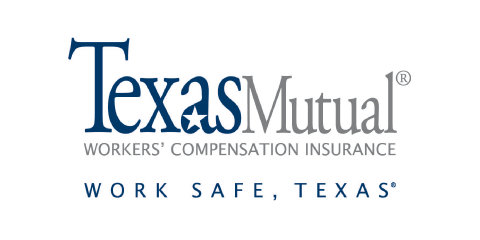Choice of Entity for Insurance Agencies in Texas
By John E. Gangstad1
I.
Introduction
There are now quite a number of different ways an insurance agent in Texas can organize an insurance agency business. The primary options are: (i) sole proprietorship, (ii) general partnership, (iii) registered limited liability partnership, (iv) limited partnership, (v) limited liability company, (vi) regular “C” Corporation, and (vii) “S” Corporation. This article will briefly discuss various legal and practical issues that an insurance agent should consider in deciding whether to use an entity and, if so, deciding which type of entity is best for the particular insurance agent.
II.
Factors To Be Considered
The two primary factors to consider are: (i) whether the owner(s) have liability for torts (i.e., wrongful actions such as errors, omissions, negligence, deceptive trade practices, and tortious interference with a contract) and contractual obligations of the business, and (ii) the tax consequences of the entity selection.
The liability issue primarily relates to the issue of whether an equity owner of the business will be vicariously liable for any obligations of the entity. Under the statutes for certain entities, this is the case, and for others the owners are not vicariously liable. This will be discussed more below.
The tax factor relates to two issues. First, most entities are subject to the Texas franchise tax (which is now generally a tax on revenues – a “margin tax”) and but a couple are not. Second, certain entities result in taxation only of the ultimate owner, while other entities result in taxation both at the entity level and also at the owner level with respect to distributions or dividends paid to the owners of the entity.
Other less important factors that differ from entity to entity are (i) transferability of ownership interests, (ii) ease of management, (iii) formation costs, and (iv) limitations on number and types of owners.
III.
The Liability Issue
To appreciate the liability issue, certain legal principles need to be reviewed. First, the type of entity makes a difference in whether an owner of the business is personally liable for debts and other liabilities of the business. With respect to a sole proprietorship and a general partnership, owners (i.e., the sole proprietor of the proprietorship and the general partners of the partnership) are vicariously liable as a matter of law for all tort and contractual liabilities of the business. In a sole proprietorship (which involves the sole proprietor doing business under a business name without forming an entity), this means that any contracts entered into by the sole proprietor or by authorized employees of the business give rise to liabilities that can be satisfied, not only out of assets of the business, but also out of non-exempt assets of the owner of the business (i.e., the sole proprietor). The same is true with respect to tort liabilities (or statutory liabilities such as taxes) of the sole proprietorship. With respect to a general partnership, this means that any contracts entered into by any of the general partners or by the authorized employees of the general partnership and any torts committed by any of the general partners or by employees of the partnership within the ordinary course of the general partnership’s business give rise to claims of creditors that may be satisfied, not only out of the property of the general partnership, but also out of all of the non-exempt assets of each general partner.
With respect to (i) registered limited liability partnerships (an “LLP”), (ii) a limited partnership, (iii) a limited liability company (an “LLC”), (iv) a corporation which has not made an IRS S-election (a “C-Corporation”), and (v) a corporation which has made an IRS S-election (an “S-Corporation”), the owners are not vicariously liable for contractual or tort liabilities of the entity.2 However, here an important observation must be made. It is that an owner can always be liable for wrongful or negligent actions that the owner personally commits while acting on behalf of the entity in which he owns an interest. For instance, if the owner negligently allows the business’s vehicle he is driving to collide with another vehicle, the injured person can always recover against the negligent owner/driver because of the owner’s negligence. In addition, under principles of law, requiring entities to be responsible for negligent acts committed by the entity’s agents within the course of the entity’s business, any valid claim may also be recoverable against the entity. A second observation is that owners can always contractually assume a debt of the entity (and quite often are required by a creditor to do so). In that case, the creditor can assert any unpaid claims against the owner’s non-exempt personal assets as a result of the owner’s contract with the creditor. The fact that the entity is primarily liable is no defense to the owner in a suit by the creditor based on a contract between the owner and the creditor.
The net effect of the above is that use of certain legal structures (i.e., a sole proprietorship or a general partnership) automatically results in vicarious personal liability of the owners of the business. However, others (i.e., an LLP, limited partnership, LLC, CCorporation or SCorporation) do not result in vicarious liability of the owners (but, as noted above, use of such entity under the applicable statutes does not insulate an owner from the consequences of the owner’s own wrongful actions or contracts). Of course, that is the starting point and owners of entities must always also be concerned with potential “piercing-the-veil” type theories that may apply despite the starting point of owner liability protection.3
IV.
Taxation
The taxation factor has two parts to it: (i) first, applicability of the Texas franchise tax, and (ii) second, “double taxation” under federal income tax law. The following of the typically used entities are not currently subject to the Texas franchise tax: (a) sole proprietorships and (b) general partnerships. LLPs, limited partnerships, LLCs, C-Corporations and S-Corporations are subject to the Texas franchise tax. Other passive entities and trusts are also exempt from Texas franchise tax; however a discussion of those types of entities is beyond the scope of this article. Therefore, the only common business forms which are not subject to the Texas franchise tax are (i) sole proprietorships and (ii) general partnerships.
On the federal income tax side, the issue is basically whether the choice of entity allows for the possible “double taxation” of revenues of the entity. Double-taxation is the term for the possibility that revenue earned by the business may be taxed (i) first, at the entity level and (ii) second, on the income distributed to the owner(s) of the entity as distributions or dividends.
A C-Corporation presents the risk of double taxation. On the other hand, sole proprietorships, general partnerships, LLPs, limited partnerships, LLCs, and S-Corporations are not subject to taxation at the entity level (at least absent an election filed with the IRS to be taxed as another type of entity). Instead, the entities file an information tax return with the IRS and all taxable income is allocated to the owners in proportion to their interests in the entity. With respect to a sole proprietorship, the income of the business is simply reported as income of the owner/sole proprietor. However, it should be observed here that it is not necessarily the case that a C-Corporation will result in “double taxation” since a corporation is not required to pay any dividends. If a corporation can justify paying out all or most of its net income to its officers without such payments constituting “excessive compensation” under IRS rules, then all or most of the income of the business can be returned to the owners in the form of salaries. The result of doing so is that no dividends are paid, and, as a result, no second tax is paid on the dividends. However, where shareholders are not active in the business and as a result cannot be paid substantial salaries, dividends are the primary way to get income to passive shareholders.4
V.
Making the Choice
If liability protection is not an issue, a sole proprietorship is the indicated choice of a single business owner since the continuing franchise tax exemption appears more likely and the entity form is simple and relatively inexpensive (e.g., no filings with the Secretary of State are required). It is also the simplest from a federal tax perspective since no new tax return is needed (i.e., income is reported on the individual owner’s return) and there is no risk of “double taxation” of income. If there is more than one owner of the business, but no concern about liability, a general partnership may be the best choice of entity since the Texas franchise tax does not apply to general partnerships. Use of a general partnership also does not present any risk of double taxation since income of a partnership is not taxed at the partnership level but is instead allocated to be taxed to the partners in proportion to their partnership interests and any taxes due paid by the partners.
If there is concern about liability, one entity that should be considered is a Texas Registered Limited Liability Partnership (“LLP”). This type of entity provides protection from vicarious liability of partners for torts committed by other partners or other representatives of the LLP unless such partner is directly involved in the tortious conduct or supervised the person who committed the tort and failed to take reasonable acts to prevent or correct the tortious conduct. Partners of an LLP are also not liable for debts of the LLP (unless they contractually bind themselves to be liable). From a state tax perspective, an LLP now is subject to the Texas franchise tax. From a federal tax perspective, taxation is the same as with a general partnership. Thus, there is no risk of double taxation of income since income is allocated to the partners and not taxed at the LLP level. However, an annual filing with the Secretary of State is required, along with a filing fee of $200 per partner. There is also a requirement that the LLP either (i) carry liability insurance of $100,0005, or (ii) establish a $100,000 segregated escrow fund or a $100,000 letter of credit to pay certain types of claims.5
The final types of common business entities that should be considered are a C-Corporation, S-Corporation or LLC. All of these will be subject to the Texas franchise tax (which has certain thresholds before the tax applies).6 From a liability perspective, there is protection from vicarious liability of owners which is basically the same for all three types of entities. In making the decision between these three types of entities, federal taxation issues should be considered. A C-Corporation will be taxed at the entity level, and any dividends will be taxable to the shareholders. So, a C-Corporation should only be used if the owners are not concerned about double taxation. This could either be because the C-Corporation’s attractiveness (e.g., its acceptance as a financing vehicle) outweighs the double-taxation issues, or, as discussed above, the owners are sufficiently involved in the business to justify salaries being paid to such persons (which are not so great as to be “excess compensation”) in order to reduce net income of the corporation to $0 or a small amount. If a C-Corporation is ruled out due to double-taxation concerns, the decision is then between S-Corporation and an LLC. Between the two, an LLC is probably preferable. While both avoid double taxation, there are no restrictions on the number or types of owners of an LLC. On the other hand, S-Corporations (i) cannot have certain types of shareholders (e.g., generally corporations and other entities are prohibited), (ii) can only have one class of stock, and (iii) cannot have more than 75 shareholders. Finally, it is noted that it is a common practice for single business owners to use a single member LLC. A single member LLC is disregarded for federal income tax purposes (but not Texas franchise tax purposes) and thus no separate federal tax return is required for the LLC. On the other hand, it is respected for Texas law purposes and thus insulates the owner from vicarious contract or tort liability (subject to “piercing” theories mentioned above).
VI.
Conclusion
So, which entity is best? As can be seen from the discussion above, the answer is “It depends.” That is, it depends on the situation and concerns of the owner(s). A person deciding on an entity must consider what his or her concerns are and how the different characteristics of the various entity alternatives help allay those concerns. Then, with the aid of an attorney and tax advisor, the owner (s) can make a selection based on the circumstances of the owner (s) and the characteristics of the various entities.
1 Mr. Gangstad is a partner of Bickerstaff Heath Delgado Acosta, LLP. He practices in the areas of corporate law, securities, and mergers and acquisitions. This article should not be construed as legal advice and readers should consult with their attorney and tax adviser when forming any entity. This article has been updated on July 19, 2010, and is current only as of that date.
2 This result assumes the “piercing-the-veil” or alter ego theories will not be applicable. A discussion on such theories of imposing personal liability on the owners of the entity is beyond the scope of this article but their possible application is always a qualification to the starting point that under the statutes for these entities the owners of an entity are not liable for the debts and other liabilities of the entity.
3 For a good discussion of these liability theories readers are referred to Elizabeth S. Miller, OWNER LIABILITY PROTECTION AND PIERCING THE VEIL OF TEXAS BUSINESS ENTITIES (May 28, 2010), which article is posted on Professor Miller’s website.
4 Readers should consult with their accountants or other tax advisors regarding tax issues applicable to their individual circumstances.
5 The types of liabilities that must be covered by insurance, escrow fund or letter of credit is set forth in Section 152.804 (a) of the Texas Business Organizations Code. This type of liability insurance may be difficult to obtain for some types of businesses.
6 Readers should consult their tax advisers regarding the specifics of the Texas franchise tax.














